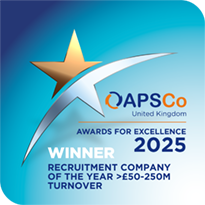In today's competitive job market, having a well-crafted portfolio is essential for standing out from the crowd. Whether you are a recent graduate looking to land your first job or an experienced professional aiming to showcase your expertise, a portfolio can greatly enhance your chances of impressing potential employers. If you’re looking to put together a compelling example of your skillset, take a look at these 9 things you should consider:
Define your goals
Before diving into creating your portfolio, it is important to define your goals. Decide whether your portfolio will be targeted towards a specific industry or job role. Clarifying your objectives will help you curate relevant content and tailor your portfolio accordingly.
Select your best work
Highlight your most significant projects and experiences. Choose work that demonstrates your technical competence, problem-solving abilities, and creativity. Include a mix of individual and team projects, placing emphasis on those that showcase your strengths and accomplishments.
Organise your content
Structure your portfolio in a logical order to create a seamless flow. Begin with a brief introduction, followed by your resume or CV, and then move on to your projects and achievements. Divide your projects into different categories such as electrical engineering or mechanical design, depending on the nature of your work.
Document projects you’ve been involved in
Present each project with a clear and concise description, including the problem or challenge you faced, the objectives, and the outcomes or successes. Include relevant technical details, such as the tools, software, or methodologies you used. Visual representation is crucial - include photographs, diagrams, sketches, and samples of your work to provide a visual understanding of your projects.
Highlight your technical skills
An engineering portfolio is an excellent opportunity to showcase your technical expertise. Create a separate section to detail your skills, certifications, and training. Include software proficiency, qualifications you hold, and any specialty or industry-specific knowledge you possess. This section will provide employers with a comprehensive overview of your technical capabilities.
Include testimonials and recommendations
To solidify your credibility and reinforce your skills, consider including testimonials or recommendations from previous colleagues and clients. These endorsements demonstrate your professional reputation and can provide valuable insights into your work ethic, problem-solving abilities, and communication skills.
Demonstrate continuous learning
It is essential to demonstrate that you are committed to ongoing learning and professional development, so be sure to include any professional certifications, workshops, seminars, or online courses you have completed. This shows employers that you are dedicated to staying up-to-date with industry trends and expanding your knowledge base.
Polish and review
After curating your portfolio, thoroughly proofread and review it for any errors or inconsistencies. Ensure that all the content is visually appealing, coherent, and easy to understand. Remember, the portfolio acts as a reflection of your professionalism and attention to detail.
Create a digital version
In addition to a physical version, create a digital engineering portfolio that can be easily shared online or emailed to potential employers. Utilise platforms like LinkedIn, personal websites, or online portfolio services to exhibit your work virtually. Make sure your digital portfolio is visually engaging, easy to navigate, and accessible across different devices.
Looking for more career advice?
Building an impressive portfolio requires careful consideration and curation of your projects, skills, and achievements, but there’s much more that goes into finding a new role than just that. If you’re looking for further guidance on updating your CV, want to find out the best interview advice to help you succeed or if you’re just getting started looking for a new position and want to see what’s available, please follow NRL on LinkedIn or connect with me if you’d like to hear more about some of the latest jobs we’re recruiting for.


.png)


.png)



.jpg)